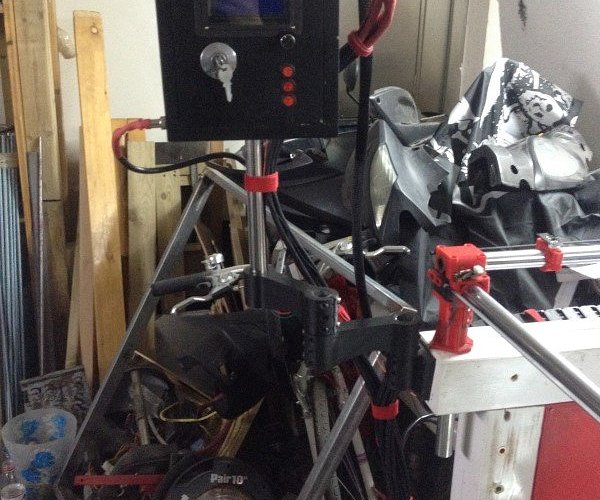I understand your point. Making a worlwide doable machine must be a nightmare… I don’t have to consider this issue since I don’t intend to mass produce anything, but I totally get it.
That would be nice if you could come up with a nice solution for that though, since it is sometimes hard to lock things firmly in place on the MPCNC, especially the screws on the corner parts and on the rollers.
Hehe, sure. My point was just to say that the belt tensionners are solid enough, despite their tiny size. I was worried about that before I tested them. Plus I like guitars.
I get your point, but actually, if those are not tightened it introduces a small amount of backlash in all the axis. I’m not worried at all about my tubes since they are extremely rigid (that is, in my opinion, the strong link in my particular machine, because the deflection in those is almost negligible). But I get your idea, and you might have a point. I’ll test and tell you if this actually makes a difference to tighten those hard.
Good point about making them asymmetrical. I’ll keep that in mind for a future version, since I already started printing those things. I won’t extend my machine anyways, I think the build surface will still be large enough, even with a few centimeters lost.








 As someone that produces with their MPCNC on a daily basis, I am always looking to cut part times. I would actually say for whatever reason my MPCNC is not THAT rigid. Unless I flex the gantry with my hands on someone else’s build, I have no comparison. But if I look closely while cutting, I do see that I get some flex here and there. Not enough to cause any serious issues. It is very hard to tell exactly where our flex comes from. In my opinion it is a little bit of everything.
As someone that produces with their MPCNC on a daily basis, I am always looking to cut part times. I would actually say for whatever reason my MPCNC is not THAT rigid. Unless I flex the gantry with my hands on someone else’s build, I have no comparison. But if I look closely while cutting, I do see that I get some flex here and there. Not enough to cause any serious issues. It is very hard to tell exactly where our flex comes from. In my opinion it is a little bit of everything.











